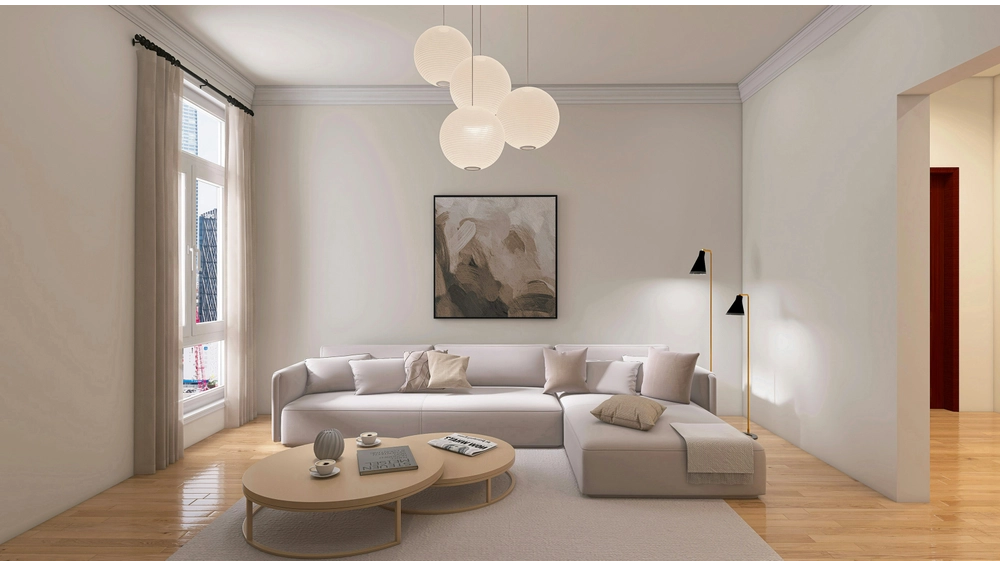Minimalism used to mean “less.” In 2025, it means intelligently enough.
AI-driven interior systems are evolving the minimalist philosophy into something adaptive, emotional, and alive. These new environments don’t just look clean — they listen, learn, and react. From lighting that shifts with your mood to furniture that remembers your posture, AI adaptive minimalism is redefining the art of living with purpose and calm.

What’s Trending / What Changed
From Static Aesthetics → Living Design Systems
Design minimalism once focused on reduction. Now, with AI, it’s about responsiveness: spaces that evolve with your behavior and energy patterns.
Why Adaptive Minimalism is Rising Now
- Emotional Analytics: Smart sensors interpret facial cues and tone to tune lighting warmth or texture ambiance.
- AI Material Intelligence: Smart wood, shape-memory metals, and responsive fabrics adapt for comfort and energy efficiency.
- Color Neuro-AI: Algorithms match hues with your daily mood and circadian rhythm.
- Environmental Personalization: Homes adjust acoustics and scent levels to enhance focus, rest, or creativity.
Google Trends shows a 240 % rise in “AI minimalist interior design” searches since late September 2025 — signaling a global pivot toward emotional minimalism.
Why Adaptive Minimalism Matters
Emotional Well-Being
AI turns design into therapy — balancing overstimulation from digital life with calm, mood-aware spaces.
Sustainable Comfort
Adaptive systems adjust brightness, temperature, and airflow based on real-time occupancy, cutting waste by up to 30 %.
Individual Harmony
No two homes feel identical — your AI home grows into your rhythm, reflecting daily life rather than decorating it.
Aesthetics Meet Intelligence
Form and function merge seamlessly as furniture and decor adapt invisibly to human behavior.
Real-World Innovations
- Muji x OpenAI CalmSpace — AI minimalist apartment that adjusts sensory inputs using ambient learning.
- LG LivingOS — smart walls that project different tones and textures based on mood analytics.
- Dyson PureLight System — combines air purification with circadian lighting driven by emotional input.
- Casper FlowForm Sofa — adaptive foam adjusts firmness using motion recognition.
- Nexthome Aura — plug-and-play home ecosystem learning user mood patterns via voice and environment sensors.

Ethical & Creative Dimensions
Privacy in the Home
Mood and biometric tracking require strict privacy frameworks — AI must remain local, not cloud-dependent.
Design Ethics
AI minimalism should enhance humanity, not automate emotion — users must stay in creative control of their environments.
Aesthetic Authenticity
Over-personalization risks losing the timeless calm that minimalism embodies; restraint must remain core.
Accessibility
Adaptive design must stay affordable — inclusive minimalism matters more than luxury exclusivity.
How to Begin Building an AI-Adaptive Minimalism Space
- Start with Light: Install adaptive AI bulbs or systems that match daylight and mood.
- Simplify Surfaces: Choose multifunctional, sensor-integrated furniture for efficiency and harmony.
- Curate Digital Quiet: Limit screens; use projection surfaces that appear only when needed.
- Automate Air & Sound: Connect purifiers and ambient noise control to your AI hub for seamless balance.
- Let the AI Learn You: Live naturally — over time, your environment refines itself around you.

FAQs & Takeaways
Q1: How does AI adaptive minimalism know my mood?
Through multimodal sensors analyzing light exposure, tone of voice, and environmental cues.
Q2: Is adaptive minimalism expensive?
Early adopters pay more, but modular AI systems now offer scalable, affordable packages.
Q3: Can AI replace interior designers?
No — it augments their intuition, ensuring beauty and balance stay human-led.
Q4: Is adaptive minimalism sustainable?
Yes — adaptive energy use and smart materials minimize waste, aligning with circular design principles.
Key Takeaways
- Adaptive AI transforms minimalism into living design.
- Emotion, comfort, and sustainability coexist seamlessly.
- The home of the future won’t just house you — it will understand you.
#AIInteriors #AdaptiveDesign #LivingSpaces #AIMinimalism #SmartLiving #SustainableDesign #AIInnovation #DesignTrends2025 #Designs24hr
If the article helped you learn something new or changed how you think about technology and creativity, share it — and tell us your experience in the comments.
Explore the latest trends, or understand how AI is shaping design and daily living, visit Designs24hr.com — where intelligence meets imagination.







